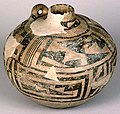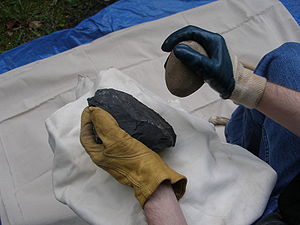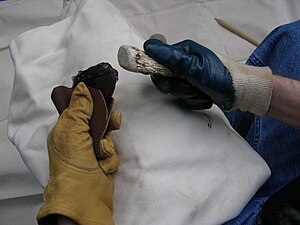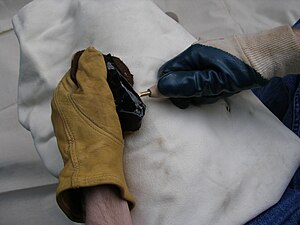AY Honors/Native American Lore/Answer Key
1. Name five uses made of natural materials by the Northwest Indians.
2. Name five uses made of the yucca plant by the Southwest Indians.
3. Name five uses made of the birch tree by the Eastern Woodland Indians.
4. Know 15 plant foods introduced to us by the Indians. Include four plant names used today.
Squash, corn, and beans were known as the "Three Sisters" by Native Americans. The Three Sisters were the three main indigenous plants used for agriculture. These were usually planted together, with the cornstalk providing support for the climbing beans, and shade for the squash. The squash vines provided ground cover to limit weeds. The beans provided nitrogen fixing for all three crops.
All the foods in the list below were introduced by the Native Americans. Items in bold retain their Native American names.
- Pumpkin
- Avocado
- Bell pepper
- Chili pepper
- Cassava
- Chicle (chewing gum)
- Cocoa
- Green Bean
- Guava
- Maize (corn)
- Papaya
- Peanut
- Pecan
- Pineapple
- Potato
- Squash
- Sunflower
- Sweet Potato
- Tomato
- Wild rice
5. Describe Indian stalking and tracking.
6. Name five rocks and/or minerals and uses made of them by the Indians.
- Flint, used for making arrowheads, knives, and other cutting tools.
- Obsidian, used the same way as flint.
- Clay, used for making pottery.
- Turquoise, used for adornment
- Argillite, used in art
7. Explain one way in which arrowheads were made by the Indians.
A flintknapper is an individual who shapes flint or other stone through the process of knapping or lithic reduction, to manufacture stone tools.
Knapping is done in a variety of ways depending on the purpose of the final product. For stone tools flint is worked using a fabricator, such as a hammerstone, to remove flakes from a core of tool stone. Stone tools can then be further refined using wood, bone, and antler tools to perform pressure flaking.
There are many different methods of shaping stone into useful tools. The three simplest techniques are mentioned below.
Hard Hammer Precussion
Hard hammer techniques are used to remove large flakes of stone. Early flintknappers and hobbyists replicating their methods often use cobbles of very hard stone, such as quartzite. This technique can be used by flintknappers to remove broad flakes that can be made into smaller tools.
Soft Hammer Precussion
Early flintknappers could have used simple hammers made of wood or antler to shape stone tools. Soft hammer techniques are more precise than hard hammer methods of shaping stone. Soft hammer techniques allow a flintknapper to shape a stone into many different kinds of cutting, scraping, and projectile tools.
Pressure Flaking
Pressure flaking involves removing narrow flakes along the edge of a stone tool. This technique is often used to do detailed thinning and shaping of a stone tool. Pressure flaking involves putting a large amount of force across a region on the edge of the tool and (hopefully) causing a narrow flake to come off of the stone. Modern hobbyists often use pressure flaking tools with a copper or brass tip, but early flintknappers could have used antler tines or a pointed wooden punch. Traditionalist flintknappers still use antler tines and copper tipped tools. The major advantage of using soft metals is that the metal punches wear down less and are less likely to break under pressure.







